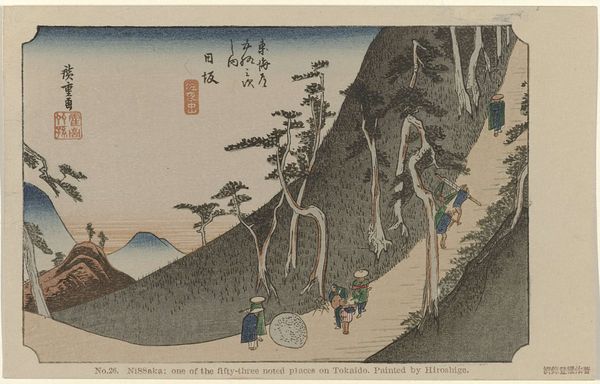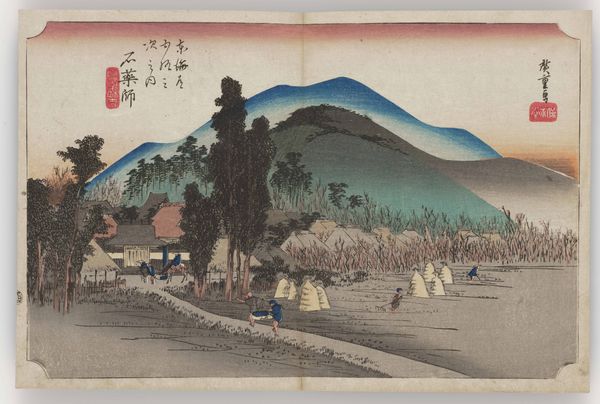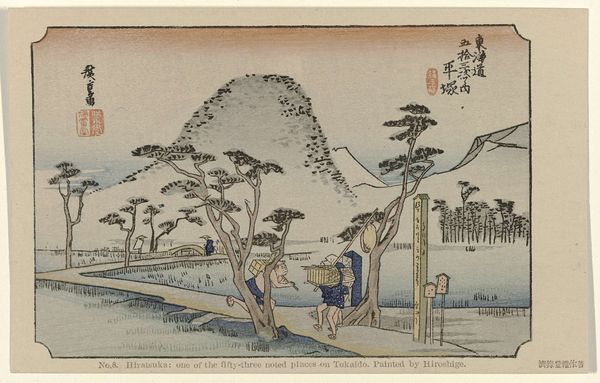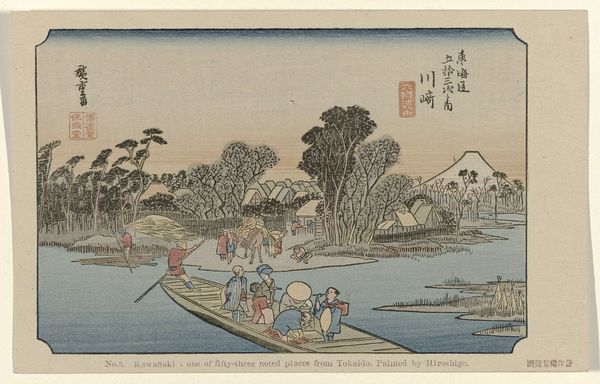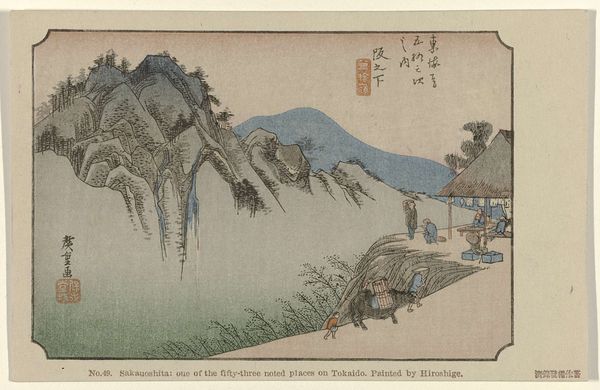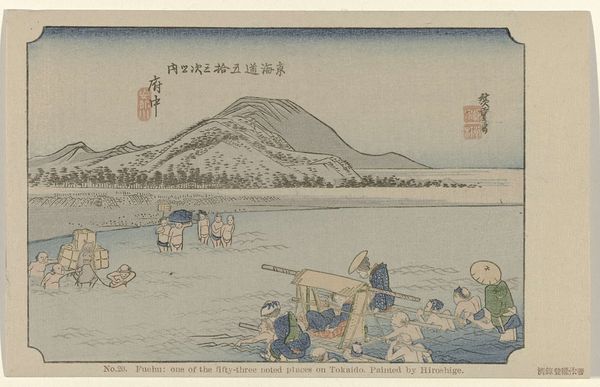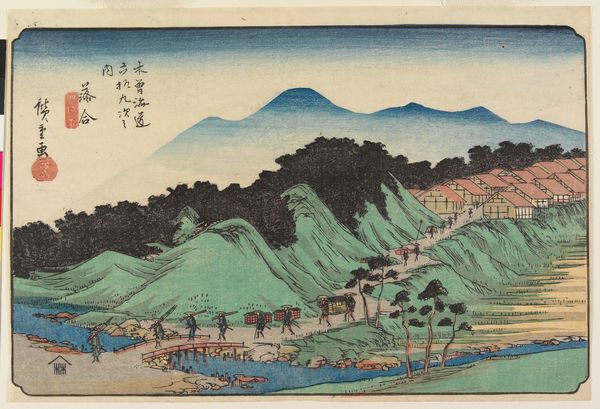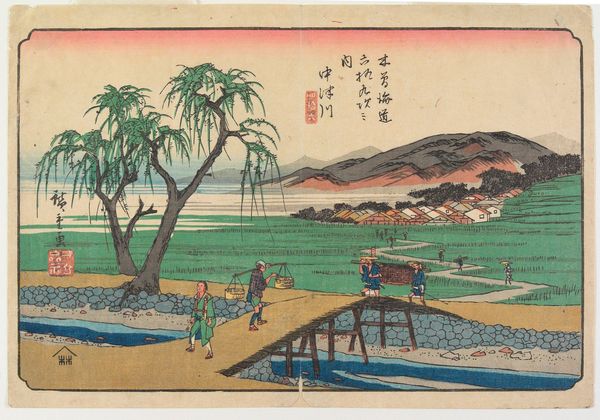
Dimensions: height 90 mm, width 141 mm
Copyright: Rijks Museum: Open Domain
Curator: I find myself strangely soothed looking at this—it's so subtle, like a half-remembered dream, a watercolor sigh. Editor: We’re looking at "Ishiyakushi," a woodblock print created around 1906 by Utagawa Hiroshige, now residing at the Rijksmuseum. Part of his series depicting the fifty-three stations of the Tōkaidō road. Curator: Fifty-three stations... that's quite a journey. I wonder if he was always this quiet on the road, though. There is something incredibly zen, maybe even melancholic, about the grayness. The sky bleeding into the water, figures bending... It makes me wonder what's on their minds? Editor: It's interesting you mention melancholy. Consider the context—this was during the Meiji era, a time of intense modernization in Japan. Prints like these, part of the *ukiyo-e* tradition, become ways to look back at more "traditional" or idealized ways of life in the face of rapid industrial changes. A longing perhaps for the familiar. Curator: Yes, perhaps a longing is part of the picture. The *ukiyo-e* tradition itself—"pictures of the floating world," so often associated with fleeting pleasures—finds itself marking the very things being lost. I do love that slight nod to impressionism; look at how he treats the mountains in the background... so ethereal. Editor: Absolutely. But I also think we can see a certain political nuance here. Hiroshige’s art was, and is, accessible to many, far from the elite artworks, which created the opportunity to communicate anti-establishment and revolutionary ideas, by focusing on ordinary people, everyday lives. The woodblock-print becomes a populist tool. Curator: A tool for the quiet revolution. It makes you reconsider how landscape—something we often think of as passive, inert—can actually be an arena for political expression, perhaps? I think it has even shifted my understanding of how I feel about that grey now, not melancholic, maybe reflective, even radical, then! Editor: Exactly. "Ishiyakushi", is not just a scenic view; it’s a piece of history and political sentiment—woven into the very fibres of its being. Curator: What a story hidden in shades of grey, I’m quite compelled. Editor: Indeed. Hiroshige provides us more than simply an artwork, we find a meditation of history in plain sight.
Comments
No comments
Be the first to comment and join the conversation on the ultimate creative platform.

